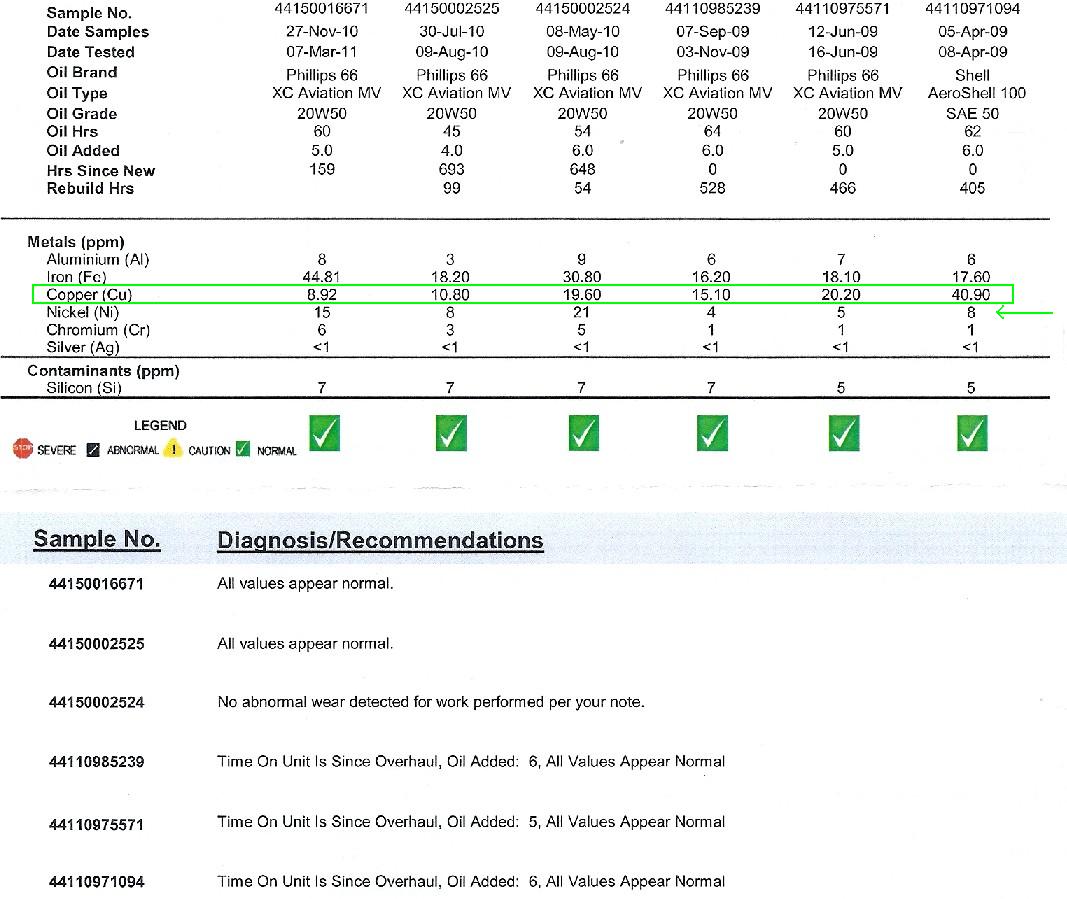terrykohler
Well Known Member
Recent oil analysis of my O320 (now at 600+ hours) showed a spike in copper. Where's it coming from? OK, I know the main bearing are copper, but they're clad, and I'd be seeing babbit material before copper. Pushrod guides are typically bronze, so there's a possibility there.
A call to Lycoming tech support lead me to find that in the heat treatment of their camshafts, the parts are first coated with a copper "flash". This is subsequently stripped off the lobes and bearing journals before the parts are sent into a carburizing furnace. The copper prevents the carbon rich atmosphere from selectively penetrating the surface - the result is higher carbon on the uncoated surfaces for greater wear resistance and normal base material on the coated surfaces for greater ductility.
After heat treatment, the copper remaining on the non-wear surfaces is still there but plays no role in any way in normal engine operation. Here's the rub- the multigrade shell has an agent that tends to strip off the copper and hold it in solution. No problem either way, but it will show up in oil analysis.
Terry, CFI
RV-9A N323TP
A call to Lycoming tech support lead me to find that in the heat treatment of their camshafts, the parts are first coated with a copper "flash". This is subsequently stripped off the lobes and bearing journals before the parts are sent into a carburizing furnace. The copper prevents the carbon rich atmosphere from selectively penetrating the surface - the result is higher carbon on the uncoated surfaces for greater wear resistance and normal base material on the coated surfaces for greater ductility.
After heat treatment, the copper remaining on the non-wear surfaces is still there but plays no role in any way in normal engine operation. Here's the rub- the multigrade shell has an agent that tends to strip off the copper and hold it in solution. No problem either way, but it will show up in oil analysis.
Terry, CFI
RV-9A N323TP





